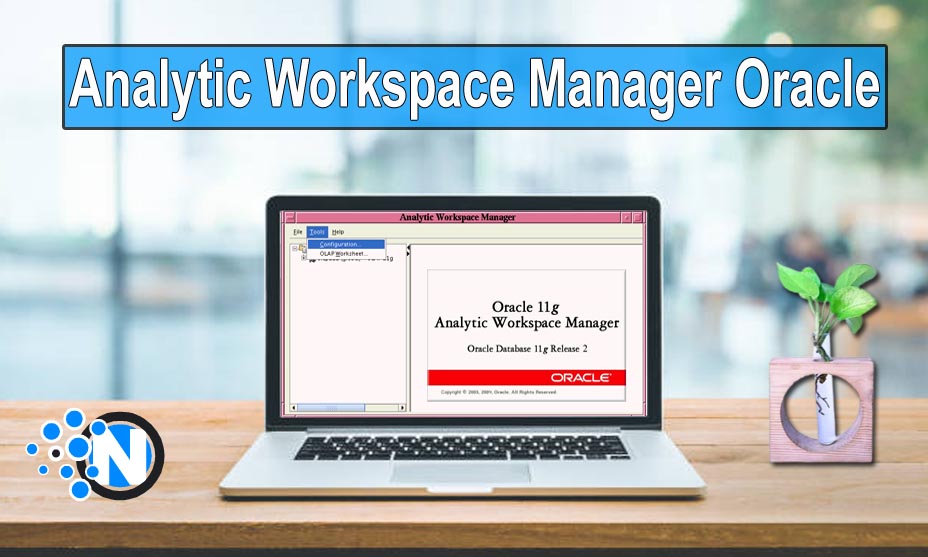Analytic Workspace Manager Oracle – An Introduction

Analytic Workspace Manager is one of the best tools developed by Oracle to perform numerous functions on multidimensional data. This includes creation, management, and analysis to work with Oracle Online Analytical Processing technology. As a result, it can support the development and moderation of analytics workspace. This tool is highly efficient because of its sturdy infrastructure and enables users to perform complex tasks. If you are looking for more features and other aspects of AWM, you are at a completely right place. In this guide, we have elaborated on the different elements you can learn to have the best experience.
What is Analytic Workspace Manager Oracle?
Analytic Workspace Manager is a highly efficient tool that is developed specifically to provide a foundation for Oracle Online Analytical Processing, shortly known as OLAP. These are special database objects that possess the ability to store multidimensional data and allow users to evaluate, organize, and analyze them properly and effectively. Hence, it can align the data according to the business’s analytical needs and enhance different activities, like forecasting, trend analysis, and predictions. Thus, you can have immense outcomes, which could be impossible without the help of AWM.
Key Features of Analytic Workspace Manager
After researching the web and testing extensively, we have enlisted the following points that can best depict the key features of Analytic Workspace Manager. All of them resonate with the requirements of analysts, data scientists, and business intelligence professionals.
1 – Workspace Creation and Configuration

Analytic Workspace Manager helps you to create your independent workspace in which you can perform several activities. You can customize different elements such as dimensions, measures, hierarchies, and other associated structures to make your workspace more efficient and according to the analytical requirements. This can make working more streamlined and effective.
2 – Data Loading and Integration
Data loading and integration are other significant features of the Analytic Workspace Manager. The tool provides you with complete mechanisms to load data from different sources into the analytic workspace. You can integrate the information from the databases of Oracle as well as from other repositories. Consequently, the workspace is saturated with relevant and vast information. You only have to ensure that the data is up-to-date. Otherwise, you will not get the desired perks.
3 – Dimension Management

AWM allows you to customize the dimensions of your analytic workspace so that you can get more consistent results. This includes adding or removing dimensions by changing the number of elements and hierarchies. It also builds a relationship between several components, streamlining the whole functioning. Changing the dimensions and adjusting them to a particular level can help you capture the multidimensional nature of the data.
4 – Cube Design and Modeling
Analytic Workspace Manager lets you create and design cubes to smoothen the process of integrating and analyzing data in multiple dimensions. The cubes showcase the core analytical structures based on which you can perform several critical functions. With the help of this tool, you will get a graphical interface depicting the complete procedure to design cubes and adjust their properties according to the business requirements.
5 – Security and Access Control
As mentioned previously, the AWM helps you add and analyze the datasets in an analytic workspace. Therefore, tremendous security is required to manage access controls to the data. The AWM has features that can equip you with critical security elements. It lets you define the roles of specific users to only allow them to have access to the workspace and datasets. Hence, you can maintain the transparency of your business and can take it to an advanced level.
6 – Query and Analysis
AWM possesses the ability to execute complex queries on the analytics workspace so that users can perform ad-hoc analyses. Additionally, it enables them to divide the data into different dimensions for more comprehensive outcomes. Afterward, generating reports from the sliced data can give better and more valuable insights, which can help you process the underlying datasets. It not only brings efficiency to the process but also improves overall results.
7 – Integration with Oracle Database
Analytics Workspace Manager is the part of Oracle system. Resultantly, it can integrate seamlessly with the database of Oracle to bring more updated data to ensure consistency. Also, it allows the utilization of other Oracle features to generate more comprehensive and functional workspaces.
How to Create a Workspace with Analytic Workspace Manager Oracle?
In the under-section, we have highlighted some critical steps you need to follow to create a workspace with Analytic Workspace Manager. It is necessary to follow all the steps precisely. Otherwise, a slight mistake can spoil the whole work and won’t provide you with the desired results.
1 – Choose a Schema
Firstly, you have to choose a schema to create a workspace. You can do this activity by the relational table. In this way, you can give it a unique name which can help you to prevent unwanted conflicts with already created schemas.
2 – Set Advanced Storage Options
Storage setting is very important to maintain the performance level of your analytic workspace. You must set the crucial elements at their required level. If set improperly, the system will fail to load the data and run-time analysis, delivering poor experience and performance to you. The default settings serve as the best when you have a dense time dimension and zero values less than 30%.
3 – Dimension and Cube Design
In the next step, you have to design dimensions and cubes within the workspace by customizing different elements as described in the above sections. It helps you not only store and organize data effectively but also process it smoothly.
4 – Choose Build Options
Choosing the build option according to the dimensions of the workspace is the next step. The Analytic Workspace Manager enables you to determine the quantity of datasets you can integrate into it. In this way, you can decide the functioning and performance. Generally, you have three options.
- No data integration
- Data from dimension tables only
- Both dimensions and facts tables are used to leverage datasets.
5 – Get Scripts
If you want to build a larger analytic workspace to add an extensive amount of data, you must look forward to utilizing the potential of SQL database scripts. These scripts enable you to perform several tasks like you can make critical changes in the overall build process. In addition, you can schedule the complete steps by bringing automation. It will save both time and effort.
Final Verdicts
Analytic Workspace Manager Oracle has taken the world by storm by allowing you to capture, organize, and analyze multidimensional data more effectively and effortlessly. By utilizing the features of this high-end tool, you can create workspace and integrate datasets in them to get more meaningful insights and make data-driven decisions. In this way, you can unlock incredible advantages for your company and organization. However, it is necessary to incorporate the updated and correct data for more consistent and beneficial results.




